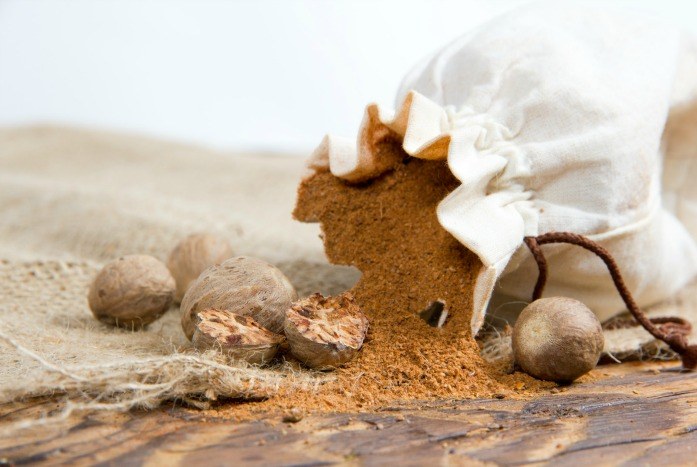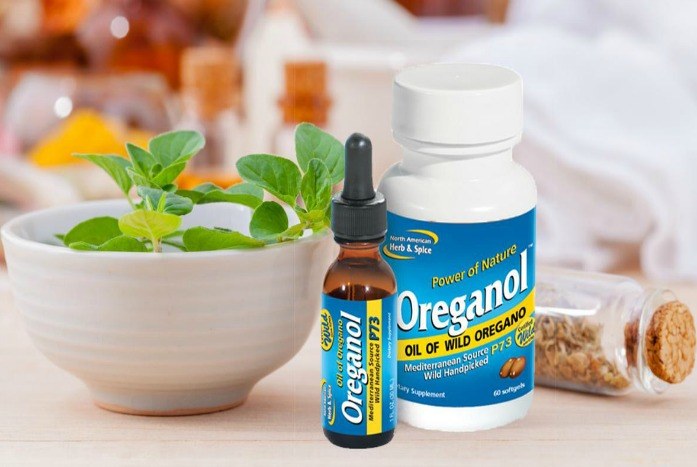Updated: 08/30/2019
CONTENTS
People who are suffering from diabetes, cancer, respiratory illnesses, weak immune system, kidney failure requiring dialysis, small babies, and nursing mothers are at higher risk of getting the staph infection problem. Furthermore, this problem is capable of spreading easily through skin-to-skin contact, cuts, and abrasions. And it also spreads from one part to another part of your body. Therefore, go to the hospital and ask the doctor for the proper treatment and diagnosis of this situation. Besides, you can apply some natural remedies, which can be easily found in your kitchen. To know more about these natural treatments for this condition, please continue reading this article, which will present to you the best home remedies for staph infection on face & body skin.
- Top 14 science-based home remedies for boils (This article was medically reviewed/fact checked by Sarah Brewer MSc , MA (Cantab), MB, BChir, RNutr, MBANT, CNHC)
- Top 20 home remedies for angular cheilitis
- What is bacterial infection in blood in early stage?
Top 20 Natural Proven Home Remedies For Staph Infection On Face & Body Skin
What Is Staph Infection?
Staph infection or staphylococcus infection is a common problem, which is caused by staphylococcus bacteria[1]. This problem is often found on the skin. An infection happens when the bacteria enter your skin through the lesion or the opening. And now what you want to know is about the symptoms of staph infection. They include impetigo, cellulitis, and boils as well as staphylococcal scaled skin syndrome. Plus, this bacterium causes food poisoning which has some symptoms such as diarrhea, low blood pressure, dehydration, vomiting along with nausea. Furthermore, staph infection is contagious, and it can affect anybody.
Home Remedies For Staph Infection
1. Sea Salt
Sea salt contains hygroscopic agents and can be used for treating wounds. Further, this remedy is useful in combating against the skin infections caused due to bacteria[2]. Sea salt can aid in lessening the swelling of the affected area that would be beneficial in treating staph infections quickly. For treating staph infections with sea salt, follow the steps below:
- Add sea salt to some water.
- Then, clean your wound with this mixture.
2. Nutmeg
EffectiveRemedies Partner Solutions

Ask a Doctor Online and Get Answers in Minutes, Anytime!
Have medical questions? Keep asking questions to a Verified Expert until you get the answer you need.
Thanks to its antibacterial, antimicrobial, and anti-inflammatory characteristics, nutmeg can kill bacteria causing boils and other staph infections[3] [4]. Nutmeg can also be added to your dishes to help enhance the immune system.
For treating staph infection, you need to make a paste by mixing nutmeg and water. Then, apply to your affected area before covering. Alternatively, you can apply the powder to your affected area and allow it to open.
3. Witch Hazel
Witch hazel helps prevent infections and relieve inflammation as it contains natural astringents. Witch hazel can help reduce the growth of bacteria, so it is one of the most effective home remedies for staph infection. The antibacterial properties of witch hazel may fight against Staphylococcus aureus (including resistant strains), Escherichia coli, Enterococcus faecalis, and Bacillus subtilis[5] [6].
For this treatment, you can make a mixture of water and witch hazel and smear on your wound before dressing. For effective results, repeat this process every day.
4. Tea Tree Oil
Tea tree oil is beneficial in treating a staph infection. It contains anti-inflammatory and antimicrobial properties that may treat staphylococcus aureus and wounds, according to a study of the American Journal of Infection Control in 2004[7]. Besides, tea tree oil relieves skin discomfort, which is caused by a staph infection. Moreover, it contains a few active ingredients named terpene alcohols. The terpinen-4-ol is effective at killing numerous kinds of pathogenic microorganisms, including a few species of staph bacteria. Many clinical studies have tested the effectiveness of this oil as a natural treatment for staph infections. A 2004 study published in the “Journal of Hospital Infection” indicated that the tea tree oil was examined as a possible remedy for infection with MRSA (methicillin-resistant Staphylococcus aureus), a dangerous form of staph infection[8]. In the report, this oil was as useful as standard antimicrobial therapy in treating MRSA infections in the nose and more beneficial than the standard therapy in getting rid of infections on the skin.
- Take two or three drops of tea tree oil.
- Place them on a soft cotton swab.
- Dip this swab on your affected area.
- After a few minutes, wash off with water.
- Do this remedy once or twice a day
- Keep doing this every day until you get your expected results.
Note: Don’t eat this oil because it can cause some side effects.
5. Using Tea Tree Oil & Aloe Vera
As you can see, tea tree oil can not only treat staphylococcus aureus but also relieve the discomfort due to its anti-inflammatory and antimicrobial properties. Aloe vera is a wonderful treatment for many skin problems, including staph infections. Aloe vera comes with antibacterial effects, which may help fight against Staphylococcus bacteria[9] [10]. These effects may be used to deal with staph infections.
- Take several drops of this oil and 1 tsp of aloe vera gel.
- Mix these ingredients well.
- Apply this mixture to your affected area.
- Wash it off after a few hours with water
- Follow this method once or twice per day.
Note: You should not orally consume this oil because it can cause some side effects. Sometimes, if you don’t have aloe vera gel, you may use honey instead.
6. Manuka Honey
Manuka honey, a kind of honey, which is from New Zealand, has healing, antimicrobial, and antibacterial properties. These properties may help to control the staph infection[11]. Plus, it can speed the healing process up, eradicate the infection along with sterilizing the wound. According to a study in 2002, Manuka honey includes phytochemicals, which can help to inhibit the development of the bacteria which cause infection. In September 2009, the National Geographic News reported that some unidentified compounds in Manuka honey make it become more effective and useful than regular honey in preventing MRSA growth in the laboratory. Another study in the “Journal of Applied Microbiology” in 2002 showed that the phytochemicals present in Manuka honey aid in inhibiting the development of the bacteria responsible for the infection[12].
- Take some Manuka honey.
- Apply it to your affected area.
- Let it sit in a few hours before washing off with water.
- Repeat this procedure a few times a day daily for best results.
7. Apple Cider Vinegar
Thanks to its anti-inflammatory and antibiotic properties, apple cider vinegar helps to fight against the bacteria and promote the healing process. Furthermore, it may boost your immune system to prevent further infection[13]. Moreover, ACV has antimicrobial properties, which may help remove microbes like staphylococcus, thus helping treat infections triggered by them[14].
Method 1:
- Take apple cider vinegar and water in equal amounts.
- Mix them well.
- Clean your affected area with this solution.
- Follow these steps once or twice a day
- Repeat every day until you see an improvement.
Method 2:
- Take one or two tablespoons of apple cider vinegar.
- Add them into a cup of warm water.
- Add a little honey if you want.
- Consume this solution twice per day until your condition is improved.
8. Turmeric
One of the natural and quick home remedies for staph infection is turmeric. It includes antibacterial, anti-inflammatory, antioxidant, and wound-healing properties, which may fight staph infection effectively[15]. Besides, it may provide your immune system with a boost[16].
Method 1:
- Pour a teaspoon of turmeric powderinto four cups of water.
- Boil it and let it simmer for about 10 minutes.
- Strain it and drink this solution.
- Follow this process twice or thrice a day.
- Repeat every day until you get your expected results.
Method 2:
You can apply turmeric powder directly to your affected area a few times per day to relieve the symptoms of staph infection. You can also take turmeric supplements every day. But if you want to take these supplements, you ought to ask the doctor for advice before using them.
9. Garlic
In the list of the natural and quick home remedies for staph infection, garlic ought to be mentioned too. MRSA or Methicillin-resistant Staphylococcus aureus is a serious staph infection, which has become a major reason for hospital-acquired infections. Staph infections can cause boils or wounds on your skin, and the infected part may cause inflammation and pain until your infection clears up. Garlic is a natural antibiotic, which may help to fight the bacteria of staph infection[17] [18]. A microbiologist at the University of East London, Dr. Ron Cutler, says that the main ingredient in garlic, allicin, has the ability to treat the staph within days. It also helps to decrease the intensity of the symptoms and discomforts, which are associated with this infection.
- Clean your affected area.
- Spread some garlic oil on your affected area.
- Use a bandage to cover it.
- Leave it on for a few hours.
- Remove the bandage.
- Do this treatment twice per day in a few days or until you notice the positive result.
Eating raw garlic or adding garlic to your diet is also a good idea to treat a staph infection. You can also take some garlic supplements after asking your doctor.
10. Oregano & Olive Oil
Oregano oil can fight against staph infections effectively because of its antibiotic properties. It comes with various chemical components, which can reduce the infection.
In 2007, the Journal of Medical Microbiology published a study about “Effects of oregano, carvacrol, and thymol on Staphylococcus aureus and Staphylococcus epidermidis biofilms.” The researchers found that oregano essential oil had a positive effect on staphylococcus aureus and staphylococcus epidermidis strains[19]. It also contains the bactericidal effect on a few strains of Staphylococcus bacteria and may be beneficial for treating wound-associated skin infections[20].
Method 1:
- Take from eight to ten drops of oregano oil.
- Pour two tablespoons of olive oil to dilute oregano oil.
- Apply this mixture of oil to your affected area.
- After a few hours, wash off with water.
- Repeat this process various times per day for quick results.
Note: This method is not suitable for pregnant women. If you do not have olive oil, you can use any other carrier oil instead.
Method 2: Oregano Oil & Fruit Juice
Oregano oil is one of the best home remedies for staph infection due to its antibiotic properties inside. And when combining it with fruit juice, you will receive a better result because the fruit juice can help to boost your immune system.
- Prepare a glass of fruit juice. You can choose apple juice, orange juice and so on depending on your favorite juice.
- Add five drops of oregano oil into this glass.
- Mix well.
- Consume this juice twice a day daily until you notice an improvement.
- You also add oregano oil to a glass of water instead of using fruit juice.
Note: Pregnant women are not advised to use this remedy.
11. Goldenseal
Goldenseal consists of antimicrobial activities against methicillin-resistant Staphylococcus aureus. Thus, it may treat staph infections[21] [22].
Goldenseal consists of antibacterial and antiseptic properties, which can help to disinfect and heal wounds. It also has a compound called berberine, which may kill bacteria causing this infection. Besides, this herb can strengthen your immune system.
- Add one or two teaspoons of this herb to a cup of boiling water or hot water.
- Allow it to steep for about 20 minutes.
- Strain the liquid.
- Directly apply this solution to your affected area by using a cotton ball.
- Keep doing this procedure up to three times per day.
12. Echinacea
Echinacea has anti-inflammatory, antimicrobial, and immune-stimulant properties, which may ease the symptoms of staph infection and promote recovery[23]. In his book, “Herbal Antibiotics: Natural Alternatives for Treating Drug-Resistant Bacteria” in 1999, herbalist Stephen Harrod Buhner states that Echinacea may be helpful for treating bacteremia, an infection that develops when staph bacteria enter your bloodstream thanks to its ability to encourage white blood cells.
According to a study in the Phytomedicine journal in 2010, researchers found that a standardized preparation of Echinacea may control the symptoms of bacterial respiratory infections[24].
- You can apply Echinacea cream directly to your affected area a few times every day.
- You also make Echinacea tea. You need to pour a few Echinacea flowers into a cup of boiling water. Let it steep for a few minutes. Strain the tea and drink it. You should drink one or two cups of this tea daily.
- Taking Echinacea supplements is also a good idea to treat staph infection after you consult your doctor for advice. And people who suffer from autoimmune disorders have to avoid using this herb.
13. Coconut Oil
Due to its anti-inflammatory and antibacterial activities, coconut oil is beneficial in treating a staph infection. Also, it has medium-chain fatty acids, particularly lauric acids, which may help to fight bacteria[25]. It also gives you relief from the discomforts.
- Gently rub some coconut oil on your affected area so that the oil can penetrate into your skin.
- Was off with water after a couple of minutes.
- Follow this process various times a day.
- Repeat every day until you notice a positive result.
14. Eucalyptus Oil
Eucalyptus oil contains anti-inflammatory and antimicrobial properties, which may fight against staphylococcus aureus[26]. Eucalyptus has volatile oil that is enriched with eucalyptol or 1,8-cineole, and other terpenoids. These constituents exert antimicrobial, anti-inflammatory, and expectorant agents. Herbalist Stephen Harrod Buhner indicated that eucalyptus oil is a useful broad-spectrum drug that can deal with antibiotic-resistant disease and fight S. aureus.
According to a study in the Phytomedicine journal in 2010, the synergistic properties of eucalyptus oil are highly effective in protecting against antibiotic-susceptible and antibiotic-resistant pathogens[27].
- Dilute some drops of eucalyptus oil in almond oil or any other carrier oil.
- Apply this mixture to your affected area.
- Rinse off after a few hours with water.
- Repeat this procedure twice a day daily in a few days.
15. Castor Oil
Castor oil contains innumerable healing values. Also, it contains antibacterial and anti-inflammatory properties, which may deal with staph infection[28].
- Warm enough amount of castor oil.
- Apply it to your affected area.
- Use a warm flannel cloth to cover it.
- Remove the cloth after leaving it on in a few hours.
- Repeat this procedure three times a day daily.
16. Bitter Gourd
Bitter gourd is also one of the natural and effective home remedies for staph infection. Bitter gourd exhibits antibacterial and antimicrobial properties, which have been proven to combat methicillin-resistant strains of Staphylococcus aureus[29] [30]. It is also rich in important nutrients, which can help to strengthen your immune system along with enhancing its function.
- Grate two bitter gourds.
- Grind them in a mixer blender with some water.
- Squeeze the mass to extract the juice.
- Consume a small glass of this juice when there is nothing in your stomach. Meanwhile, apply the rest of this juice to your affected area so that it can help you to kill the infection.
- Do this every day until you get rid of staph infections.
17. Sage Oil
Sage oil is effective in treating a staph infection. It includes good healing properties, which can help to relieve the pain and reduce the pore size. Sage oil may be useful for healing severe dermatological infections caused due to a few strains of Staphylococcus bacteria[31]. Besides, it has antiseptic and anti-stringent properties. That’s why it is said to be one of the natural home remedies for staph infection.
For this treatment, take enough amount of sage oil and directly apply to your affected area twice a day daily to get a better result.
18. Fenugreek Seeds
Thanks to their anti-inflammatory and antimicrobial properties, fenugreek seeds may help to heal your wound caused by a staph infection[32]. Apart from that, they have vitamins, proteins, minerals, and amino acids, which can help to give your immune system a boost.
- Soak an enough amount of fenugreek seeds in water from two to three hours.
- Then take them out.
- Grind them to make a fine paste.
- Wash off with water after you apply this paste directly to your affected area in a few hours.
- Do this once or twice per day for effective results.
- You can also directly consume this paste.
19. Basil Leaves
Basil leaves have antibacterial, anti-inflammatory, antioxidant, and antiviral properties, which may help to treat staph infection and speed the healing process up[33].
Method 1:
- Clean some basil leaves carefully.
- Crush the leaves to extract the juice.
- Apply this juice to your affected area or directly consume this juice.
- Do this remedy several times per day.
Method 2:
You soak basil seeds in water for 2 or 3 hours and then make a paste of it. Apply directly this paste to your affected area.
20. Onion
Just like garlic, with antibacterial, antimicrobial, and anti-inflammatory properties inside, onion may fight against bacteria causing staph infections[34] [35].
- Cut an onion into slices.
- Apply these slices to your affected area.
- Leave it on for 30 minutes and wash off
- Follow this treatment several times a day daily.
Additional Tips:
Not only do you apply these treatments which are mentioned above but you also follow these tips below:
- Do not touch your affected area if you have open wounds or sores because it can delay the healing process.
- Apply warm compress regularly to help boils.
- Wash your hands carefully and properly before you eat anything. Make sure that you use a hand sanitizer.
- Avoid sharing your personal items with other people.
- Wash bedding and clothing in hot water and then dry them under sunlight.
After reading this post, we hope that it can help you find out the best and the most suitable home remedies to get rid of your staph infection easily and quickly. However, the article is only for informational purposes; therefore, you should consult your doctor before using any of these home remedies for staph infection. If you have any queries, please leave them below.



















